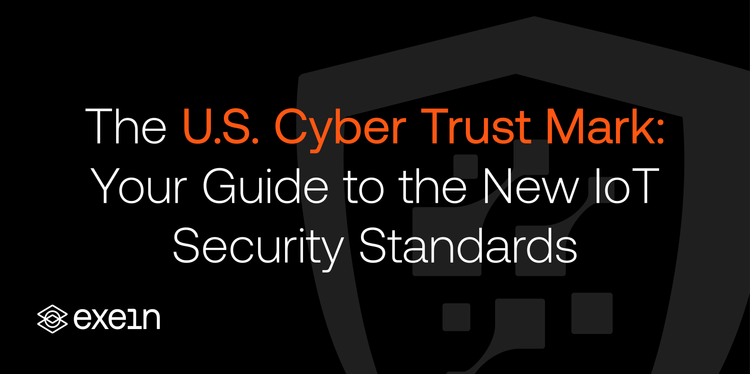Securing the Future of Connected Cars: Tackling Automotive IoT Cybersecurity Threats in 2024

As vehicles become increasingly connected, they are transforming into complex networks of sensors, software, and IoT devices. This shift brings unparalleled convenience and innovation to the automotive industry but also opens the door to new cybersecurity risks.
The first half of 2024 has seen a rise in automotive cyber threats, with attackers targeting everything from infotainment systems to critical vehicle controls. In this post, we’ll explore the latest trends in automotive IoT cybersecurity, examining the threats, vulnerabilities, and strategies that are essential for securing the connected car.
The Rise of Automotive Cyber Threats
The modern vehicle, a technological marvel equipped with advanced driver-assistance systems (ADAS), telematics, and over-the-air (OTA) updates, is increasingly vulnerable to cyberattacks.
The proliferation of Internet of Things (IoT) connectivity has created a vast attack surface for malicious actors. In 2024, we've witnessed a surge in cyber incidents targeting vehicles, with hackers exploiting vulnerabilities in both internal networks and external communications.
One of the most concerning trends is the escalating targeting of Vehicle-to-Everything (V2X) communication systems. These systems, essential for autonomous driving, enable vehicles to interact with each other and infrastructure.
However, vulnerabilities in V2X protocols have made them attractive targets for attackers. By compromising V2X systems, hackers can intercept or manipulate data, potentially leading to dangerous situations on the road.
Additional trends include
Supply Chain Attacks - Cybercriminals are increasingly targeting automotive supply chains to compromise vehicle software and firmware. This can lead to widespread vulnerabilities and recalls.
Data Exfiltration - Sensitive vehicle data, such as driver information, location history, and vehicle diagnostics, is being exfiltrated and sold on the dark web. This data can be used for identity theft, fraud, and other malicious purposes.
Ransomware Attacks - Ransomware attacks targeting automotive manufacturers and suppliers are becoming more common, disrupting operations and demanding significant payouts.
Advanced Persistent Threats (APTs) - State-sponsored actors and organized crime groups are developing sophisticated attack techniques to target automotive systems, potentially compromising national security.
These trends highlight the growing threat of automotive cyberattacks and the urgent need for robust security measures to protect vehicles and drivers.
Vulnerabilities in Automotive IoT
The intricate nature of automotive IoT systems creates a vast attack surface, with each connected component, from the engine control unit (ECU) to the infotainment system, presenting a potential vulnerability. In 2024, several high-profile vulnerabilities have been identified in both original equipment manufacturer (OEM) systems and third-party devices.
For instance, researchers have highlighted weaknesses in over-the-air (OTA) update mechanisms. While OTA updates are essential for maintaining vehicle software, they can also be exploited by attackers to inject malicious code if not properly secured. This can lead to a range of consequences, from vehicle performance issues to complete system compromise.
Similarly, telematics systems, which collect and transmit data about the vehicle's location, performance, and driver behavior, have been found to be susceptible to data breaches. These breaches can compromise driver privacy, enable vehicle tracking by unauthorized parties, and even facilitate attacks on other connected devices.
Additionally, the increasing use of third-party components in automotive systems, such as infotainment systems and advanced driver-assistance systems (ADAS), introduces additional vulnerabilities. These components may not undergo the same level of security testing as OEM-developed systems, making them more susceptible to exploitation.
Supply Chain Risks and Automotive IoT
The automotive industry's reliance on a global supply chain, with numerous components sourced from third-party suppliers, introduces significant cybersecurity risks. Vulnerabilities in any part of the supply chain can compromise the entire vehicle, making supply chain attacks a major focus for automotive cybersecurity in 2024.
For example, a compromised supplier could introduce vulnerabilities into a vehicle's software or hardware during manufacturing. These vulnerabilities might not be immediately apparent but could be exploited later by cybercriminals to gain unauthorized access to vehicle systems, manipulate vehicle behavior, or exfiltrate sensitive data.
The increasing adoption of software-defined vehicles, where much of the vehicle's functionality is governed by software, amplifies the risk posed by supply chain attacks. As more and more components and systems become software-defined, the attack surface expands, making it more difficult to identify and mitigate vulnerabilities.
Additionally, the complexity of modern supply chains, with multiple tiers of suppliers and subcontractors, makes it challenging to ensure that all components meet rigorous security standards.
Key Strategies for Protecting the Connected Car
Embedded security, the integration of security features directly into the hardware and software of automotive IoT systems, is paramount in safeguarding modern vehicles.
By prioritizing secure coding practices, rigorous testing, and robust encryption, manufacturers can significantly reduce the risk of vulnerabilities being introduced into their systems.
Strong encryption is especially critical for protecting sensitive information transmitted via Vehicle-to-Everything (V2X) communications and during over-the-air (OTA) updates.
Moreover, a secure supply chain is essential to prevent compromised components from being integrated into vehicles. Enforcing strict cybersecurity standards and conducting regular audits of suppliers can help mitigate supply chain risks.
Regular patching and updates are equally important for closing security gaps and keeping vehicle systems secure.
Anomaly detection and response mechanisms, powered by advanced monitoring systems with AI-driven analytics, are crucial for identifying and addressing unusual network activity. By rapidly detecting and responding to threats, manufacturers can prevent potential attacks and protect their vehicles from harm.
By embedding security into the core of automotive design and complementing it with these proactive strategies, manufacturers can create a resilient defense against the evolving threats in the IoT landscape.




